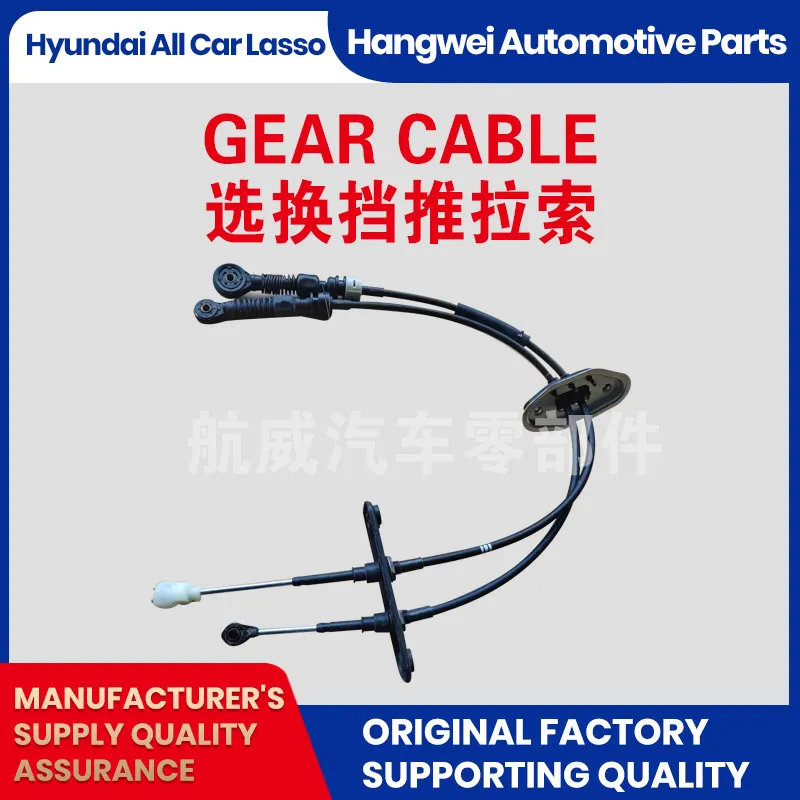Exploring the Importance of Gear Cables for Efficient Biking Performance and Maintenance
Understanding Gear Cables The Backbone of Bicycle Gear Systems
When it comes to maintaining and enhancing the performance of a bicycle, one of the most critical components that often goes unnoticed is the gear cable. Gear cables are an integral part of a bike's shifting system, responsible for transmitting the rider's inputs to the derailleurs, which ultimately control the movement of the bike's gears. Understanding gear cables and their importance can significantly improve your cycling experience.
What Are Gear Cables?
Gear cables are thin, strong wires that connect the shifters (located on the handlebars) to the derailleurs (located near the bike's gears). These cables are typically housed in a protective casing known as a cable housing. The primary function of these cables is to transmit the motion from the shifters to the derailleur, allowing the cyclist to change gears smoothly and efficiently. Without these cables, shifting gears would be impossible, making them a vital component of any geared bicycle.
The Components of Gear Cables
1. Cable Housing This is a protective sleeve that encases the gear cable. The housing helps to keep the cable free from dirt and grime, which can hinder performance. It is essential to ensure that the housing is intact and not cracked or damaged; otherwise, dirt can get inside and affect gear shifting.
2. Outer Cable The outer cable serves as the framework that provides tension and structure. It is generally made of a flexible yet durable material, allowing it to bend without breaking.
3. Inner Cable This is the actual wire that runs through the housing. The inner cable is what pulls the derailleur when the shifter is engaged. It is usually made of stainless steel or another corrosion-resistant material to ensure longevity.
4. Cable Ends These are small caps that secure the ends of the cables to prevent fraying and to keep them in place. Properly installed cable ends are essential for smooth and reliable performance.
gear cables

Why Gear Cables Matter
The effectiveness of gear cables directly affects the overall performance of the bike. If gear cables are frayed, rusty, or improperly installed, they can lead to sluggish and inaccurate shifting. Such issues not only hinder a cyclist's performance but can also lead to more significant mechanical problems if not addressed promptly. Regular maintenance of gear cables is crucial; this includes cleaning, lubricating, and replacing worn-out cables.
Signs of Worn Gear Cables
1. Sluggish Shifting If you notice that your gears are not shifting as quickly or smoothly as they used to, it could indicate that the cables need some attention.
2. Stripped Gears If the shifter feels loose, it may be a sign that the cable has stretched or has come loose from the derailleur.
3. Visual Damage Any visible fraying, rust, or kinks in the cable housing or inner cable means it’s time for a replacement.
Conclusion
While gear cables may seem like a small part of the vast machinery that powers a bicycle, their significance cannot be overstated. Proper functioning gear cables ensure seamless gear shifts, enhancing both the efficiency and enjoyment of riding. Regular maintenance and timely replacement of these cables will not only prolong the life of the bike but also improve the overall riding experience. Whether you're a competitive cyclist or a casual rider, investing time in understanding and maintaining your gear cables will pay dividends in your cycling endeavors.
-
Workings of Clutch Pipe and Hose SystemsNewsJun.04,2025
-
The Inner Workings of Hand Brake Cable SystemsNewsJun.04,2025
-
The Secrets of Throttle and Accelerator CablesNewsJun.04,2025
-
The Hidden Lifeline of Your Transmission Gear Shift CablesNewsJun.04,2025
-
Demystifying Gear Cables and Shift LinkagesNewsJun.04,2025
-
Decoding Clutch Line Systems A Comprehensive GuideNewsJun.04,2025
